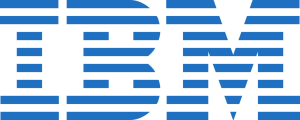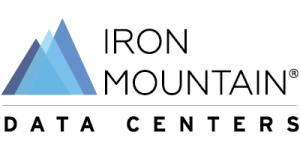AI Action Summit 2025: Key Takeaways from Paris
The2025 AI Action Summit, held at the Grand Palais Éphémère in Paris from April 23 to 25, marked one of the most influential global gatherings in artificial intelligence this year. The summit convened leaders from across the AI landscape—CEOs, engineers, policymakers, researchers, data center architects, and digital infrastructure investors—all united by one purpose: to explore how AI is redefining business, governance, and society.With over 10,000 in-person attendees and a virtual audience that surpassed 100,000, the summit offered a deep dive into the next generation of artificial intelligence. It tackled everything from regulatory frameworks and sustainability challenges to emerging AI infrastructure and sector-specific applications.Whether you’re a startup founder training your first foundation model, a hyperscaler executive designing next-gen data centers, or an investor seeking the next unicorn in AI infrastructure, the summit’s takeaways reveal key directional shifts in technology, policy, and market behavior.This article explores the six most important insights from the AI Action Summit 2025—and why they matter for anyone building or supporting AI-powered ecosystems.1. The Rise of AI-Defined InfrastructureReshaping Data Centers for the Age of AIAs AI training and inference workloads intensify, infrastructure has emerged as both a bottleneck and an enabler. One of the summit’s most discussed topics was the increasing demand forAI-optimized infrastructure—not just more compute, but smarter, denser, and more sustainable facilities.Speakers from NVIDIA, Meta, Intel, and AMDstressed how training large language models (LLMs) now requires tightly coupled GPU clusters with:High-bandwidth, low-latency interconnectssuch as NVLink and InfiniBandRack densities exceeding 100 kW, often requiring liquid coolingBare metal deploymentsthat bypass the overhead of traditional virtualizationDistributed edge inference nodesto support latency-sensitive applications in fields like autonomous vehicles and roboticsPanelists agreed: the future of AI isn’t just about models—it’s about infrastructure. AI is now an infrastructure-first problem, and both cloud and colocation providers are under pressure to evolve fast.Equinix and Digital Realty announced upgrades to several of their European campuses to support high-density, AI-ready deployments, while startups like DedicatedNodes showcasedLLM-specific colocation bundlesthat include custom cooling, remote GPU access, and direct peering with major cloud providers.2. AI Regulation Is No Longer OptionalCompliance Moves to the Core of Deployment StrategyAs AI capabilities race ahead, policymakers are moving quickly to catch up. A major highlight of the summit was a fireside chat betweenEU Commissioner Margrethe Vestager and U.S. FTC Chair Lina Khan, who emphasized the rising tide of global AI regulation.With theEU AI Act taking effect in mid-2025, the summit made it clear:regulatory compliance is now a core pillar of AI deployment strategy.Key topics included:Algorithmic transparency and explainability, especially for high-risk modelsAuditability requirements, forcing companies to document and justify model behaviorCross-border data transfer policies, impacting how global companies deploy AI across jurisdictionsCertification regimes, particularly for AI used in medical, financial, or public safety contextsFor enterprises operating in Europe—or even serving European customers—the implications are significant. Infrastructure teams must now work closely with legal, risk, and compliance teams to ensure that every AI deployment meets local and international standards. Data residency, encryption, and identity management aren’t afterthoughts—they’re now minimum requirements.As AI becomes more powerful, it must also become more accountable.3. From Foundation Models to Industry-Specific IntelligenceThe Shift Toward Verticalized AIWhile general-purpose models like OpenAI’s GPT-5 and Google’s Gemini Ultra remain headline grabbers, a growing movement at the summit emphasizedspecialized, domain-specific AI.Breakout sessions byMcKinsey, Salesforce, and AWShighlighted a growing trend: companies are increasingly deployingindustry models—LLMs and multimodal systems trained on tightly scoped data tailored to specific verticals.Some examples that stood out:BioLLM, trained on biomedical literature for pharmaceutical RDFinLM, focused on fraud detection and financial document parsingLexiLaw, an AI assistant for legal research with built-in jurisdictional contextMedVoice, tuned for doctor-patient transcriptions and medical summarizationThese models are not only more accurate within their domains, but they also offer better explainability and compliance compatibility—critical for high-risk applications. They also benefit fromhybrid deployment strategies: high-performance GPU clusters for training and fine-tuning, paired withregional edge deploymentsfor low-latency, in-the-field inference.Expect to see a proliferation of these “vertical LLMs” across industries like logistics, education, law, finance, and manufacturing—each with their own infrastructure needs.4. AI and Sustainability: Navigating the Double-Edged SwordBalancing Compute Hunger with Environmental ImpactAnother major theme of the summit was theenvironmental cost of AI. As model sizes balloon, so too does their carbon footprint. Training a state-of-the-art LLM can now consume as much energy as a small town over several months.Speakers fromGoogle DeepMind, Microsoft, and Schneider Electricaddressed this growing concern, presenting new strategies to decarbonize AI infrastructure:Carbon-aware scheduling: Delaying or relocating workloads based on real-time emissions dataLiquid and immersion cooling: Reducing energy use and enabling heat reuse in district heating systemsFederated learning: Training models locally on edge devices to reduce data center load and unnecessary data transferRenewable-aware workload placement: Shifting jobs to regions with excess solar or wind availabilityAI builders are beginning to realize thatsustainable scale is the only viable scale. Large enterprises like Meta are now publishing AI sustainability reports, while startups like Denvr Labs and Crusoe Energy are experimenting with off-grid compute powered by flare gas or hydroelectricity.For data centers, this means future-proofing not just with more GPUs, but withgreen power purchase agreements, innovative cooling, and circular design principles.5. Startups and Open Source Are Still Leading InnovationDisruption Still Comes from the BottomDespite the dominance of cloud giants and chipmakers, the AI Action Summit proved that innovation is far from centralized. Many of the most compelling demos and ideas came fromearly-stage startups and open-source communities.Highlights included:Open LLMslike Mistral 7B, BioLLM, and CodeFusion that rival proprietary modelsAI safety toolssuch as interpretability dashboards and adversarial testing kitsAutonomous agentsfor writing code, conducting research, and automating workflowsVector search startupsbuilding the infrastructure layer for RAG (retrieval-augmented generation)Notably,venture firms like a16z, Sequoia, and Lightspeedhosted private tracks focused on identifying the next wave ofAI-native SaaS companies,agent orchestration tools, andAI-first infrastructure plays.The big takeaway? Silicon Valley may no longer be the sole center of gravity. Startups from Paris, Nairobi, Tel Aviv, and Bangalore received heavy investor attention. AI is increasinglyglobal, modular, and community-driven.6. AI-Ready Colocation and Cloud: The New Digital Gold RushInfrastructure Becomes a Competitive AdvantageOne of the most business-critical insights from the summit was this:infrastructure providers are becoming kingmakers in the AI economy. The availability of performant, cost-effective GPU compute is now a key differentiator for AI companies.Vendors likeNVIDIA, Equinix, and DedicatedNodesused the summit to unveil AI-optimized offerings, including:Turnkey colocation packageswith 100–200 kW racks, liquid cooling, and direct GPU accessCustom bare metal serverswith NVIDIA H100s and AMD Instinct acceleratorsGPU orchestration platformsthat offer elasticity and workload placement optimizationWith AI demand surging, colocation and cloud providers are moving quickly to secure hardware, build high-density capacity, and offerpay-as-you-go GPU access. There’s also a new focus ongeographic diversity—serving workloads closer to end users while staying in compliance with local regulations.The summit made it clear:the infrastructure arms race is underway, and winners will be those who can scale flexibly, sustainably, and securely.A Global Call to ActionThe 2025 AI Action Summit in Paris wasn’t just another industry conference—it was astrategic inflection pointfor artificial intelligence. It crystallized the urgent need for AI ecosystems that are not only powerful, but also transparent, sustainable, and inclusive.The themes that emerged—AI-defined infrastructure, responsible regulation, verticalized intelligence, and sustainable scaling—are not optional considerations. They are imperatives for every player in the AI value chain, from chipmakers and cloud providers to enterprises and governments.For digital infrastructure leaders, the path forward is clear:Build for density and efficiency: Support 100+ kW racks, liquid cooling, and high-bandwidth interconnectsDesign for compliance: Adopt infrastructure strategies aligned with data residency and auditabilityPartner with startups and open-source innovators: Stay agile and future-readyGo green or go home: Tie scaling plans to renewable energy, circular cooling, and emissions trackingModularize for the unknown: Prepare for evolving workloads with flexible, composable infrastructureAI is no longer a niche. It’s a general-purpose technology that will shape every sector, every market, and every corner of the infrastructure landscape.The decisions made today—about architecture, sustainability, regulation, and openness—will define how AI serves society tomorrow.
























